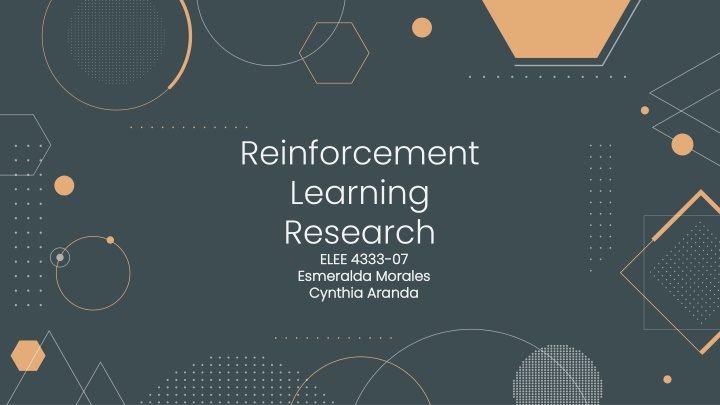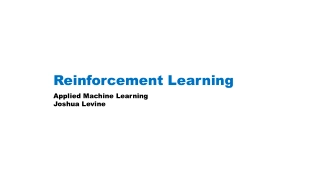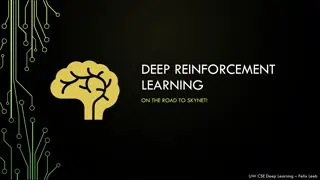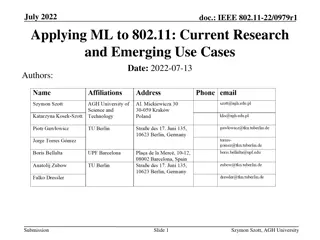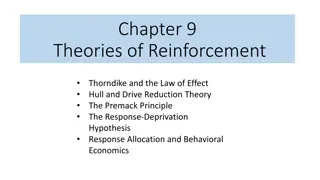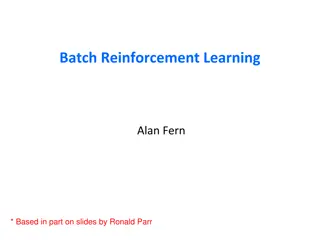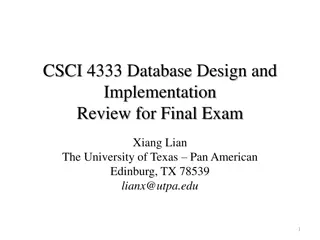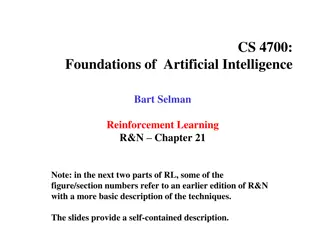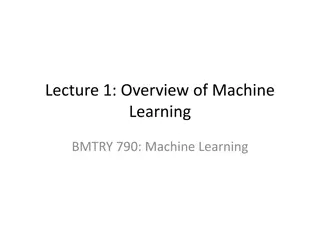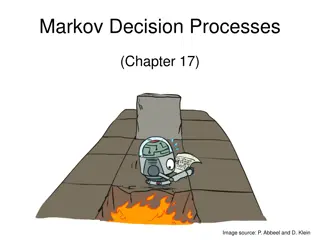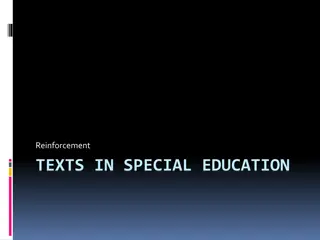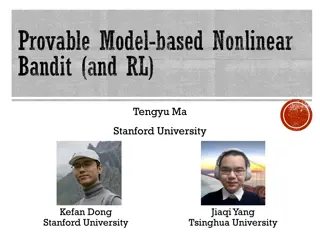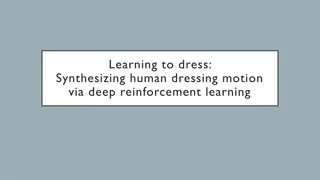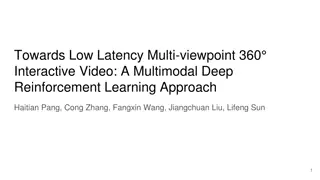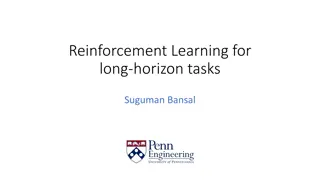Reinforcement Learning Research at ELEE.4333
Dive into the world of reinforcement learning and its applications in the research conducted at ELEE.4333. Explore the innovative work of Esmeralda Morales and Cynthia Aranda in this dynamic field, delving into cutting-edge strategies and developments that are shaping the future of machine learning.
Download Presentation

Please find below an Image/Link to download the presentation.
The content on the website is provided AS IS for your information and personal use only. It may not be sold, licensed, or shared on other websites without obtaining consent from the author.If you encounter any issues during the download, it is possible that the publisher has removed the file from their server.
You are allowed to download the files provided on this website for personal or commercial use, subject to the condition that they are used lawfully. All files are the property of their respective owners.
The content on the website is provided AS IS for your information and personal use only. It may not be sold, licensed, or shared on other websites without obtaining consent from the author.
E N D
Presentation Transcript
Reinforcement Learning Research ELEE 4333 ELEE 4333- -07 Esmeralda Morales Esmeralda Morales Cynthia Aranda Cynthia Aranda 07
Outline Machine Learning What is Reinforcement Learning? Uses for Reinforcement Learning Advantages vs Disadvantages Terminology Markov Decision Process Q-learning Conclusion
Machine Learning Machine Learning Reinforcement Learning Supervised Learning Unsupervised Learning - Regression - Classification - clustering
What is Reinforcement Learning? Reinforcement learning requires a learning agent to learn from the environment rather than being guided what to do. With the lack of designated guidelines and uncertain chances of matching the right actions, the reinforcement learning is indeed a trial-and-error learning. A numerical reward is used as a reinforcement signal to encourage the learning agent to successfully keep matching the expected outcomes. The learning agents will be guided by the problems they have encountered in past experiences and try to avoid them.
Uses for Reinforcement Learning Control Systems Robotics Game Development Automation Advertisement E-commerce (e.g., Amazon) Industrial Automation (e.g., Stocks)
Reinforcement Learning Advantages Disadvantages No need for large labeled data sets Avoid human error and bias Can outperform humans Used to solve complex problems Error is corrected as there are occurrences Learns from experience Trial/Error can be time consuming and costly Not preferred for solving methods Needs a lot of data and computation especially when the environment has a lot of states
Terminology Agent: entity that is performing the actions to accumulate reward Policy: decision making the agent employs to decide Reward: immediate return given to the agent when it performs a task Environment: scenario that an agent must face Value: long term return with discount State: current situation returned by the environment
Markov Decision Process How the environment is declared The goal is to follow the path with the highest sum of rewards Low discount factor, immediate reward High discount factor, long term reward https://www.guru99.com/reinforcement-learning-tutorial.html
Q-learning Value-based method of supplying information to inform which action an agent should take. Q means quality which represents the gain of a future reward given a situation. Seeks the best course of action to take and maximizes the total reward.
Conclusion Reinforcement learning agents are driven by explicit goals and can choose actions to influence their learning environment. This makes reinforcement learning more effective than supervised learning as it uses an approach of a complete interactive and goal seeking. It has to operate despite the uncertainty from the learning environment. This makes reinforcement learning more effective as it addresses the interplay between planning and real time selection of actions. Despite lack of instructions, the reward received by the learning agent after every action provides relevant information about how desirable the action was.
